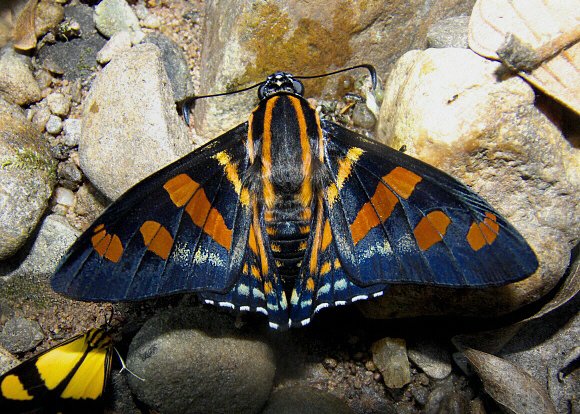
Introduction
The subfamily Pyrrhopyginae comprises 163 species, most of which are confined to the Neotropics, although a few occur in Mexico, and a single species Apyrrothrix araxes reaches Arizona.
The Pyrrhopyginae are characterised by having a massive muscular thorax and a conical abdomen with compressed segments. The wings of most species are black, often with a metallic blue sheen, and are swept back, half covering the hindwings when the butterflies settle.
Several of the genera, including Jemadia, Elbella and Parelbella have a pattern of hyaline “windows” on the forewings, and are marked with stripes and bands of brilliant blue and white.
Mimardaris has a similar pattern but differs in that the hyaline areas windows are heavily suffused with copper, and the thoracic stripes are dark orange in colour. The 7 Mimardaris species are very similar to each other in pattern, with the exception of aerata in which the wings are unmarked and metallic olive in colour.
Mimardaris sela is the most widespread species, found in Colombia, Ecuador, Peru and Bolivia. The illustrated subspecies chanchamayonis is endemic to the Chanchamayo valley in Peru.
Habitats
Mimardaris sela occurs in transitional rainforest / cloudforest habitats on the eastern slopes of the Andes, at elevations between about 400-1600m.
Lifecycle
To be completed.
Adult behaviour
Males are usually seen when discovered imbibing mineralised water from wet rocks, or at the edges of streams at dawn. They avoid sunshine and rarely fly after 10am. When settled on the ground they hold their forewings swept back, partially covering the hindwings.
